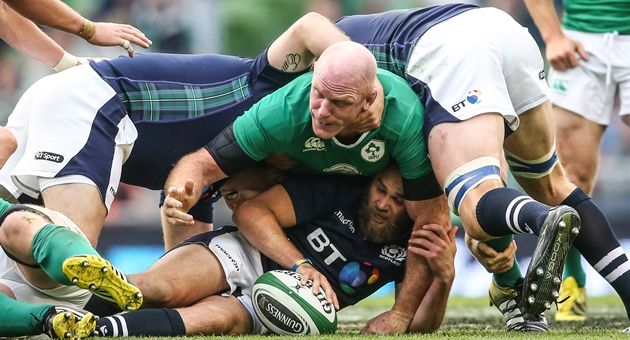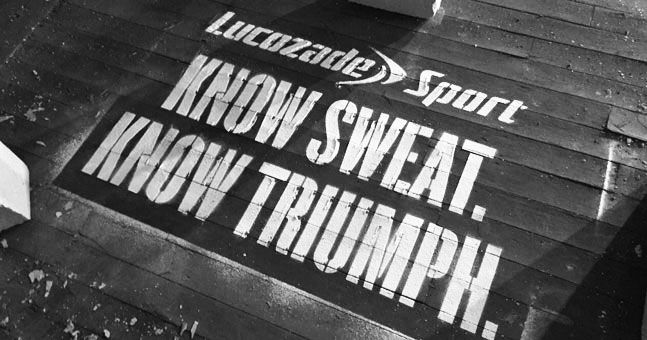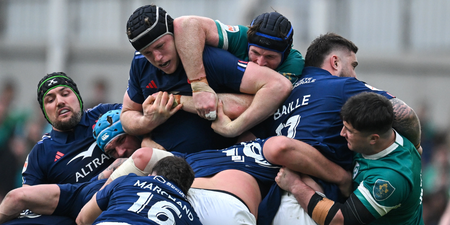It is all well and good knowing what lies ahead but shutting down threats in the heat of battle is a tough task.
Warren Gatland spoke a lot of sense when he claimed, a fortnight back, that Ireland prefer to play narrow and are, in many ways, two-dimensional.
Since Joe Schmidt took over the national side, in August 2013 [first game Nov ’13], he has drilled a simple and effective game-plan into his players.
It has paid off with two Six Nations titles and a brief, dizzying ascent to second in the world rankings.
Irish fans are happy with their lot but naysayers claim the team plays the numbers and is extremely conservative.
It was a similar case in 2009, when we won the Grand Slam under Declan Kidney. Back then, kicking away possession was the smarter way to win matches.
World Rugby has tweaked some rules but playing in the opposition half is much more advisable. Ireland, today, will often give up possession for territory. They are tough bastards to shift when they are in your half.
They use a number of attacking techniques that range from the complex to blunt object stuff.
Their use of rolling mauls off attacking line-outs, in the opposition 22, will be on show during the World Cup. Ireland will profit hugely from it.
Here are three other tactics that should see them top Pool D in the tournament.
AERIAL WARFARE
Apart from the opening warm-up victory, against Wales, Ireland have not used the kick-chase as prominently as they have in the 2014 and 2015 Six Nations.
Expect to see this unfurled as soon as the championship begins.
Ireland use it not only as an exit strategy but an attacking weapon.
Having pack and breakdown parity, at least, is key here as it places further pressure on the opposition and gives the likes of Johnny Sexton and Conor Murray the time to put up effective bombs.
Ireland are also fond of drawing in defenders by going through unruffled phases and recycling clean ball. By doing this, it allows Sexton to cross-kick to go-to wingers.
The same goes for dinks over the top off the back off solid set-pieces.
It was worrying to see England turn this tactic on its head, at the weekend, but a back three of the Kearney brothers and a battle-ready Tommy Bowe should trouble the Italians and French in our two biggest matches.
‘PAINTING PICTURES’
Animation: Schmidt loves this diversionary tactic.
Basically, it involves each player in a set-play looking, and shaping, to take the ball when, in fact, they know they are just decoys.
Scrum-half Kieran Marmion, who has featured twice for Ireland under Schmidt, explains the process.
‘We talk about painting pictures to the opposition. Animating to go one way and then going another.
‘It is all about trying to trick the opposition. That will sometimes include making eye contact with a player around the ruck, or in the backline. You are trying to lock them in and give them an image of something before doing something different.’
The perfect example of this came during Ireland’s 35-21 win over Wales, last month.
Tommy O’Donnell [pictured above] shaped to make a dart at the Welsh from close range. He knew Eoin Reddan’s pass was never going to him but sold it to the Welsh defenders.
O’Donnell drew two men as Reddan’s pass skipped him and found an open Jamie Heaslip to score [go to 1:50 in the video].
KILLER DRILL
One of the key elements in Ireland’s first Six Nations championship success, under Schmidt, was the ‘Killer Drill’.
In a nutshell, it involves a 15-on-15, defence versus attack slog that is all based in the 22 and is relentless. The watch is not stopped as the attacking team attempt to fashion a scoring chance, while the defenders using every spoiling tactic they possess.
Schmidt had his players running 2-minute, then 2:30 drills and it paid off with a Johnny Sexton try in the finalé against France.
Keeping the ball in play for as long as possible and testing one’s fitness against another set of players is a very real tactic in modern rugby.
Speaking to us about Ireland’s World Cup training preparations, Jordi Murphy reveals that the length of the drills have markedly increased over the past two years.
The back-row said, ‘We attacked Wales for the guts of five minutes earlier this year [in Cardiff, during the Six Nations] and didn’t score that time. We made errors as time went on.
‘That is something we have been working hard on in training. Upping that intensity while retaining our accuracy.’
This is a tactic that fans can certainly expect to see deployed against Italy and France.
This article has been brought to you by Lucozade Sport



















































